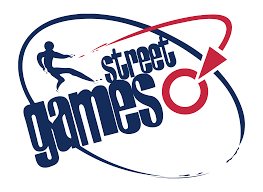Impact of sport in real-time.
SportFin helps sport organisations quantify the social impact and value they are generating and share it to their funders in real-time.
We are helping highly impactful organisations quantify and report the social impact and value they generate for communities, to preserve and grow the sport services they deliver.




How it works
Connect data. Visualise impact. Create live reports.
Collate data about participants and activities from multiple sources, generate data visualisations about your impact. Build beautiful, real-time and interactive reports and stories.
Unify data from different sources
Bring data from different sources through our activity bookings system, data importer tools or connecting your external CRM through our API.

🏀
Indoor Court
Basketball training
Very Vigorous Intensity
18:00-19:30

Jane Doe
Newcastle upon Tyne
29 years old
Female
Quantify social impact and value
Data collected from sport deliverers is enriched with open government data and analysed by our impact analytics model to build correlations to health, eduction and societal outcomes.
This data can then be visualised in real-time through representations of metrics, graphs, data tables and maps.
Health value:
£1.9M
Educational value:
£5.2K
Societal value:
£26.4K
Social impact outcomes
Build live interactive reports
The real-time data visualisations created can be embedded in rich-text editors on SportFin to create beautifully interactive live reports, stories and dashboards.
The data visualisations can also be embedded in other digital locations such as your website!
🏀 City Basketball Impact Report 2024
The club has a profound social impact on its members and the broader community. Through its inclusive approach, the club fosters a sense of belonging among players of all ages and backgrounds. By organising events and initiatives, such as youth coaching programs and charity fundraisers, the club not only promotes physical fitness but also strengthens social bonds and encourages community involvement.
Health value:
£1.9M
Educational value:
£5.2K
Societal value:
£26.4K
Value of sport estimator
Want to estimate the social value your sport organisation is generating? Open our free estimator tool to model the social value of your sport organisation, or use one of our example data sets to explore SportFin's analytics.
Use cases
A unified data and impact platform for the sport industry.
Ready to showcase your impact?
Create a free account now or book a demo to find out how your organisation can leverage social impact data to fundraise better.
Create your free account > Book a demo >Customer Reviews
Hear from our customers.
"It is a step forward in how we collect and analyse data. Something that I liked about SportFin is the simple usability for our providers. It is about selling their story first and collating it into the bigger picture for StreetGames."
- John Downes, Head of Youth StreetGames UK
"Working with SportFin was a natural progression for us. Using SportFin, we have been able to demonstrate £4.6m in savings to the NHS in 2023 from just 2 of our programmes."
- Paul Court, CEO of Healthworks
"The biggest help SportFin have given us is to quantify, 'This is the impact we have had on our community', 'We have helped X number of people age healthy'. We use this to help our organisations grow, help us get more funding."
- Alosh K Jose, Founder of Cricketqube CIC


